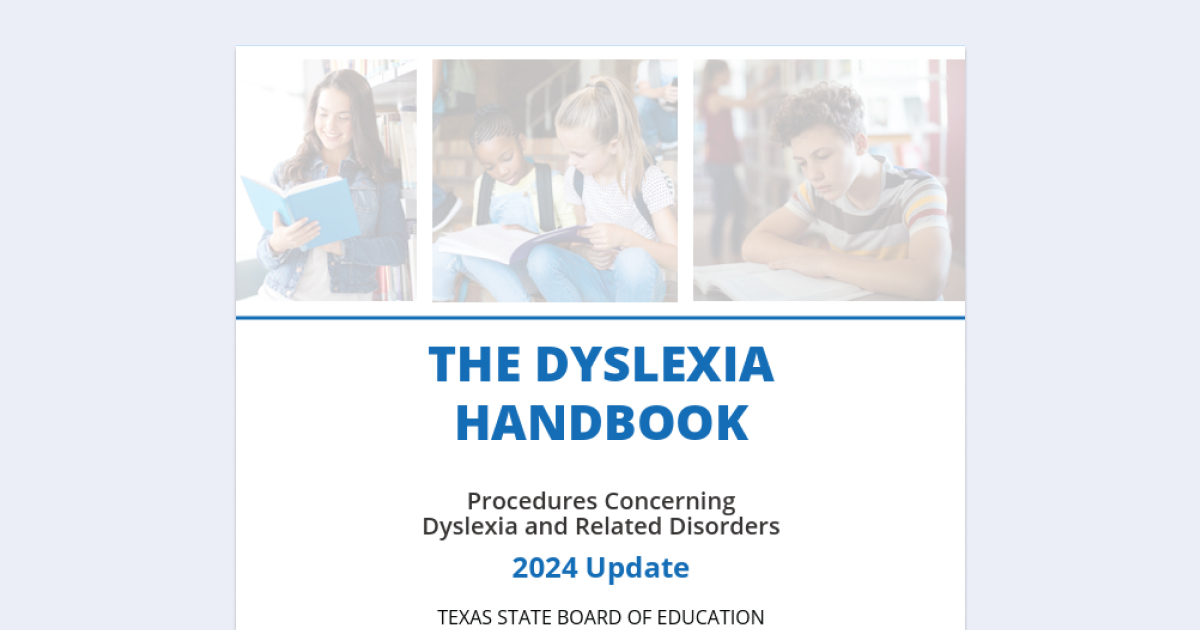
-
![]()
Workshop
Reading by Design
An Individualized Literacy Intervention is a systematic, multisensory approach aligned with research-based practices for developing literacy. This dyslexia intervention follows an intensive, explicit, and cumulative design for remediation of reading and writing skills at all grade levels.
View Workshop Details: Reading by Design -
![]()
Workshop
Reading by Design
An Individualized Literacy Intervention is a systematic, multisensory approach aligned with research-based practices for developing literacy. This dyslexia intervention follows an intensive, explicit, and cumulative design for remediation of reading and writing skills at all grade levels.
View Workshop Details: Reading by Design -
![]()
Event
Mastering Morphemes: A Workshop on Morphology and Etymology in Reading by Design
Deepen your understanding of morphology and etymology in Reading by Design Volume 5 and learn hands-on, multisensory strategies that strengthen students’ fluency, spelling, and comprehension.
View Event Details: Mastering Morphemes: A Workshop on Morphology and Etymology in Reading by Design -
![]()
Event
Book Study: Equipped for Reading Success
Join a virtual book study of David Kilpatrick’s Equipped for Reading Success to strengthen phonemic awareness instruction, orthographic mapping, and fluent word reading for students with dyslexia and struggling readers.
View Event Details: Book Study: Equipped for Reading Success -
![]()
Event
An Educator's Guide to Dyslexia Evaluations
Discover the ins and outs of working with students with Specific Learning Disabilities in Reading (aka Dyslexia) through this comprehensive workshop!
View Event Details: An Educator's Guide to Dyslexia Evaluations -
![]()
Event
Navigating the Standards-Based Individualized Education Program (SB IEP) Process for Students with Dyslexia
Join us for an in-depth professional development session designed to deepen educators’ understanding of the legal foundations and instructional practices essential to developing effective, standards-based IEPs for students with dyslexia.
View Event Details: Navigating the Standards-Based Individualized Education Program (SB IEP) Process for Students with Dyslexia -
![]()
Event
Navigating the Standards-Based Individualized Education Program (SB IEP) Process for Students with Dyslexia
Join us for an in-depth professional development session designed to deepen educators’ understanding of the legal foundations and instructional practices essential to developing effective, standards-based IEPs for students with dyslexia.
View Event Details: Navigating the Standards-Based Individualized Education Program (SB IEP) Process for Students with Dyslexia -
![]()
Event
Mastering Reading by Design
Fine-Tune Your Teaching and Master your Methodology
View Event Details: Mastering Reading by Design -
![]()
Event
Mastering Reading by Design
Fine-Tune Your Teaching and Master your Methodology
View Event Details: Mastering Reading by Design -
![]()
Event
An Educator's Guide to Dyslexia Evaluations
Discover the ins and outs of working with students with Specific Learning Disabilities in Reading (aka Dyslexia) through this comprehensive workshop!
View Event Details: An Educator's Guide to Dyslexia Evaluations -
![]()
Event
Dyslexia Therapist Training Program: Year 1 (Intro)
Apply now for the 2026 Dyslexia Therapist Training Program, a two-year, in-person structured language program at Region 13 ESC that prepares participants for CALT, CALT-C, and Texas LDT pathways using the Take Flight curriculum.
View Event Details: Dyslexia Therapist Training Program: Year 1 (Intro) -
![]()
Workshop
Reading by Design
An Individualized Literacy Intervention is a systematic, multisensory approach aligned with research-based practices for developing literacy. This dyslexia intervention follows an intensive, explicit, and cumulative design for remediation of reading and writing skills at all grade levels.
View Workshop Details: Reading by Design -
![]()
Event
Dyslexia Therapist Training Program: Year 2 (Advanced)
Apply now for the 2026 Dyslexia Therapist Training Program, a two-year, in-person structured language program at Region 13 ESC that prepares participants for CALT, CALT-C, and Texas LDT pathways using the Take Flight curriculum.
View Event Details: Dyslexia Therapist Training Program: Year 2 (Advanced) -
![]()
Workshop
Reading by Design
An Individualized Literacy Intervention is a systematic, multisensory approach aligned with research-based practices for developing literacy. This dyslexia intervention follows an intensive, explicit, and cumulative design for remediation of reading and writing skills at all grade levels.
View Workshop Details: Reading by Design -
![]()
Series
S3 - Student Support Services Network Meetings
A new monthly meeting designed for Student Support Service Leadership.
View Series Details: S3 - Student Support Services Network Meetings -
Service
Evaluation Support Options
This service is provided midway or post-evaluation but prior to the eligibility determination meeting, in which the Educational Diagnostician consults on student evaluation to ensure compliance and thoughtful determinations.
View Service Details: Evaluation Support Options -
![]()
Article
Top Apps for Dyslexic Students to Enhance Literacy Skills this Summer
Harnessing Technology to Empower Dyslexic Learners During the Summer Summer break is an ideal time for students to relax, rejuvenate, and engage in activities that promote personal growth and skill development. For dyslexic students, this period offers an opportunity to focus on enhancing their literacy skills with the help of innovative educational apps. In this […]
Read Article: Top Apps for Dyslexic Students to Enhance Literacy Skills this Summer -
Professional Development
Dyslexia: Custom PD
Our dyslexia specialists will support your district and/or campus with a full continuum of customized dyslexia training and professional development.
View Professional Development Details: Dyslexia: Custom PD -
Program Support
Dyslexia Intervention Fundamentals with Reading by Design
Reading by Design is a systematic, explicit, and intensive reading program designed to improve the reading abilities of students with dyslexia.
View Program Support Details: Dyslexia Intervention Fundamentals with Reading by Design
What is Dyslexia?
Dyslexia is a specific learning disability that is neurological in origin. It is characterized by difficulties with accurate/or fluent word recognition and by poor spelling and decoding abilities. These difficulties typically result from a deficit in the phonological component of language that is often unexpected in relation to other cognitive abilities and the provision of effective classroom instruction. Secondary consequences may include problems in reading comprehension and reduced reading experience that can impede growth of vocabulary and background knowledge. (Adopted by the IDA Board, November 12, 2002)
- Visit the International Dyslexia Association's official website
- Visit TEA's Dyslexia and Related Disorders Webpage
Need to get in touch?
Contact a member of our team for more information.
Tanya Hope, 512-919-5168 Gracie Casanova, 512-919-5154

The Texas Dyslexia Handbook, 2024
The Texas Dyslexia Handbook is developed and adopted into administrative rule by the Texas State Board of Education (SBOE). The SBOE requires that each district and open-enrollment charter school implement the SBOE’s strategies for screening, individualized evaluation, and techniques for treating dyslexia and related disorders through its approved “Dyslexia Handbook: Procedures Concerning Dyslexia and Related Disorders” [19 Texas Administrative Code 74.28]
In effect as of June 30, 2024. At the April 12, 2024 State Board of Education (SBOE) meeting, the SBOE approved for second reading and final adoption changes to 19 Texas Administrative Code (TAC) 74.28. Included as a figure in 19 TAC 74.28 is the SBOE’s Dyslexia Handbook. The rule was filed in the Texas Register on June 1, which makes the rule and handbook effective on June 30, 2024.
Manual Sobre Dislexia (The Dyslexia Handbook - Spanish)
View Handbook
Dyslexia Resources
| Additional Resources: | |
| Information for Parents: | |
| Information on Audiobook Programs: |







